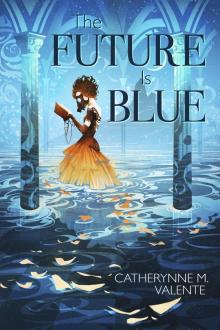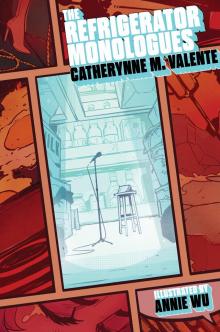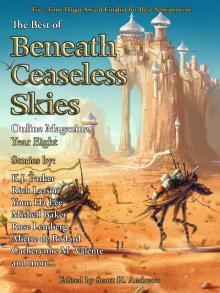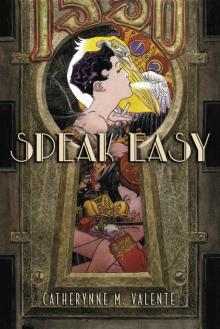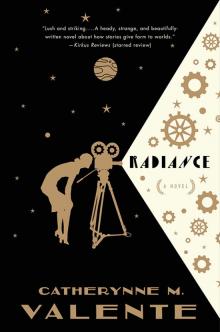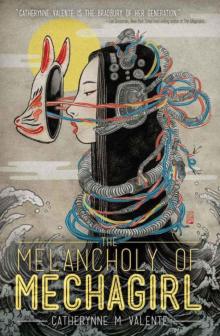


You Are Not Forgotten, Page 37
Bryan Bender
CHAPTER NINE: REDISCOVERY
The chief sources were interviews with Major George S. Eyster V; Rick Huston; Alvin Teel; Johnnie Webb; JPAC’s chief historian, Chris McDermott; Major Raymond Osorio; Bernd Henkelmann; Sandra Patricia Eyster; Dr. Peter S. Miller; Enis Wartovo; Gil Thorpe; Ken Dooley; John L. Almeida; Hattie Johnson; Jane McCown McKinney; Mrs. Vance McCown; Blair McKinney; Ellen McCown Schwab; Bill McCown; Katherine McCown Wall; and Helen Schiller; additionally, an ABC interview with Rick Huston on February 25, 2008.
Modern-day political and tribal problems in Papua New Guinea were recounted in the Europa World Year Book, vol. 2, 2004, while key details of the island’s history and topography were gleaned from Gordon L. Rottman, The WWII Pacific Island Guide: A Geo-military Study; and Herman Boyek, Kairiru: Island of Legends. The MIA recovery mission data was based on the official case histories compiled by JPAC’s history section; mission reports and after-action reviews on file at JPAC’s Detachment 4; and interviews with multiple officials at JPAC’s Central Identification Laboratory. Information on the recovery and identification process was also drawn from the author’s personal notes from the crash site and recovery effort; McCown’s MIA case file at JPAC; Eyster’s daily reports from New Guinea in January and April–May 2008; the field notes of Dr. Owen Luck O’Leary; and the laboratory’s final forensic report on McCown. Additional background information was drawn from Thomas Holland, John Byrd, and Vincent Sava, “Joint POW/MIA Accounting Command’s Central Identification Laboratory,” in The Forensic Anthropology Laboratory, edited by Michael W. Warren, Heather A. Walsh-Haney, and Laurel E. Freas.
CHAPTER TEN: COMING HOME
The main sources were the author’s personal notes and interviews from the funeral of Marion Ryan McCown Jr.
EPILOGUE
The main sources were interviews with Major George S. Eyster V; Sandra Patricia Eyster; and Ann Eyster Whittaker.
A Note About the Author
BRYAN BENDER is the national security reporter for The Boston Globe and president of the Military Reporters & Editors Association. He has covered U.S. military operations in the Middle East, Asia, Latin America, and the Balkans. He also writes about terrorism, the international arms trade, and government secrecy.
Like: www.facebook.com/YouAreNotForgottenTheBook
Follow: @GlobeBender
For more information, please visit www.doubleday.com
As a toddler at Fort Carson, Colorado, George S. Eyster V (shown here with his father) was surrounded by the trappings of Army life. Eyster family photo
George and his mother, Ann, welcome “Big George” home from the 1991 Persian Gulf War. Eyster family photo
George, pictured in 1997 with his father and Grandma Harriet, on the day he was commissioned a second lieutenant in the U.S. Army. Eyster family photo
George’s grandparents, George III and Harriet, are pictured with his great-grandfather, General Eyster.
Eyster family photo
Lieutenant Colonel George S. Eyster III (Grandpa George) shortly before he was killed in Vietnam in 1966. Eyster family photo
Grandpa George is tended to by a medic near Cu Chi, South Vietnam, after being felled by a sniper’s bullet—the image his grandson would see at the age of eleven.
Associated Press
Ryan McCown as a young Navy reservist in the late 1930s before he enrolled in Georgia Tech and became a flight cadet.
John Almeida
Ryan’s mother, Grace Aimar McCown. John Almeida
Jane McCown, Ryan’s half-sister who was born while he was in the South Pacific, and their father, Marion Ryan McCown, Sr.
Mrs. Vance McCown
Helen Miller at the time she was dating Ryan McCown in wartime Charleston. Helen Schiller
Ryan and Helen in Charleston before he shipped out to the South Pacific. Ellen McCown Schwab
The Hell’s Angels of VMF-321 in December 1943 on the island Vella Lavella. Ryan McCown is in the third row, second from right, in between Robert Marshall, who was reported missing on the same mission, and Richard “Cosmo” Marsh. Eugene “Vic” Smith is at bottom left. Roger Brindos, the third pilot lost with McCown, is at top right. Marine Corps History Division
A battered F4U Corsair, with its tell-tale gull-wing shape, taxis on a makeshift runway in the South Pacific during World War II.
National Archives and Records Administration
A high-altitude reconnaissance photograph taken by the Army Air Corps over Rabaul in December 1943. Japanese warships can be seen in Simpson Harbor, and a Japanese airfield is visible middle right, below Mt. Tavurver.
National Archives and Records Administration
The original caption on this photo from January 18, 1944, reads: “Out of swamp and jungle muck, the Seabees carved this fighter strip on Cape Torokina Field, Bougainville.” In the distance is Piruata Island in Empress Augusta Bay. Marine Corps History Division
Major Edmund F. Overend, commander of VMF-321, who along with Major Gregory “Pappy” Boyington had been a member of the American Volunteer Group, the so-called Flying Tigers, in Burma. Marine Corps History Division
The loss of the iconic Marine Corps fighter ace Pappy Boyington, shot down over Rabaul on Ryan McCown’s first mission, deeply affected morale among the pilots on Torokina. Boyington was one of the few Allied pilots who survived the war after being taken prisoner at Rabaul.
National Archives and Records Administration
Ryan McCown’s Aviator’s Flight Log Book, returned to his mother, Grace, five years after he was reported MIA. The entry for January 20, 1944, (facing page) written by one of his fellow pilots, stated simply: “Missing in action, Rabaul area.” John Almeida
Then-Captain George S. Eyster V after a nighttime raid on a suspected insurgent safe house in Iraq in December 2004. Soon after this picture was taken, he fired warning shots at an Iraqi boy fleeing into the Tigris River after a powerful roadside bomb disabled an American tank.
Eyster family photo
Chief Warrant Officer Matt Lourey, one of George Eyster’s squadron mates, was killed along with his co-pilot when his Kiowa was hit by a rocket-propelled grenade. Lourey’s death deeply affected Eyster.
Senator Becky Lourey
Building 45, the headquarters of the Joint POW/MIA Acounting Command, Hickam Air Force Base, Hawaii, April 2011. Bryan Bender
The Central Identification Laboratory, Joint POW/MIA Accounting Command.
Department of Defense
The Central Identification Laboratory relies on cutting-edge forensic technology to reconstruct bits of human remains in an effort to identify missing military personnel. Department of Defense
A JPAC recovery team in Vietnam searches for clues of missing Americans from the Vietnam War (2011).
Department of Defense
Sergeant Kili Baldeagle, who proved to be George Eyster’s right-hand man at JPAC, is surrounded by locals during a recovery mission in Laos (2007).
Department of Defense
George Eyster and former Vietcong Major Nam Thuan, the commander of “those incredible men in the tunnels” who killed his grandfather in 1966, pose for a picture outside Thuan’s home near Cu Chi in Vietnam in 2007. Eyster family photo
A view from Rabaul looking southeast over Simpson Harbor toward the active volcano of Mt. Tavurver, April 2008. Bryan Bender
One of the caves carved out of the cliffs surrounding Rabaul to shield Japanese troops and supplies from relentless Allied bombing, April 2008. Kevin Baron
Lieutenant Robert Thorpe, U.S. Army Air Corps, MIA. George Eyster had high hopes of recovering him on the remote island of Kairiru in 2007 until he learned that the grave reportedly containing Thorpe’s remains had been exhumed and the bones burned by locals fearful of evil spirits. Gil Thorpe
The wreckage of Ryan McCown’s Corsair is excavated by JPAC in the village of Vanakaur on New Britain Island, about fifteen miles south of Rabaul (April 2008).
The B
oston Globe via Getty Images
The remnants of the fuselage from McCown’s Corsair, tail number 02402, sixty-four years after he was reported missing. Kevin Baron
The damaged ID tag belonging to Captain Marion Ryan McCown, Jr., given to an Australian helicopter pilot by villagers and mailed to JPAC in 2003, jumpstarting the stalled investigation of his MIA case. Chad McNeeley
Major George S. Eyster is welcomed home from a year-long tour in Afghanistan in 2010 by his girlfriend—now wife—Sandra Patricia.
Eyster family photo
Hells’ Angels Vic Smith and Cosmo Marsh in Washington, D.C., May 2012. In the fall of 2009, unaware that their missing comrade Ryan McCown had been recovered in New Guinea, they purchased a brick in his memory at the National Museum of the Marine Corps in Quantico, Virginia, Ryan’s old base. Bryan Bender
In January 2009, Helen Miller Schiller was escorted by a cadet from the Citadel at the funeral of Ryan McCown at the Unitarian Church of Charleston, more than six decades after she heard Ryan was missing in action. The Boston Globe via Getty Images
A Marine hands a folded American flag to Ryan McCown’s only surviving sibling, Jane McCown McKinney, at the Unitarian Church cemetery, where Ryan was laid to rest next to his mother, Grace. The Boston Globe via Getty Images

